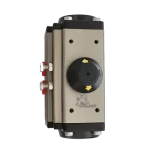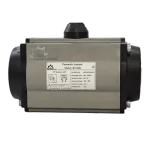Pneumatic electric valve
Pneumatic electric valve or air valve is used to control the input of ball valves, butterfly valves, plug valves, etc. The pneumatic valve operates through air compression and manual actuator and converts wind energy into rotary and linear motion to control the input.
The pneumatic valve can also be controlled electrically. For this, it is enough to install the Solenoid Valve on the valve so that the 24V or 220V command is given to the coil head through the coils, and the transfer and operation of the wind to the valve.
Pneumatic valves are widely used in refinery, petrochemical, oil and gas, steam power, food, etc. industries. Compared to electric actuators, pneumatic valves are generally recommended in industries where instantaneous opening and closing speed, more economical price, quick start-up and no need for electricity are desired.
Arad Sanat pneumatic valves range from 32 mm to 400 mm in size and are of high quality. Pneumatic valves are divided into two categories due to their type of operation on types of valves:
- Double acting pneumatic valve: This type of pneumatic valve requires the air pressure of instrumentation in the two functions of opening and closing the valve. This means that the torque required to move the valve stem must be provided by the air pressure entering the valve. The bigger the valve size is chosen according to its working pressure, the more air volume goes into the valve and creates more torque. This 4 bar air pressure valve produces about 40 Nm of torque, which is the torque for size 83 valve at 3 bar air pressure and even less.
- Single acting pneumatic valve: This type of valves have springs on both sides for single function, which causes the air pressure to act only in one direction and first by overcoming the force of the springs and then overcoming the torque required to move the valve stem and open or close the valve. As soon as the air pressure disappears, the force of the springs returns the valve to its original position. The number of springs in return spring valves can vary from 2 to 12. These different numbers with different air pressure can create different output torques for the valve.

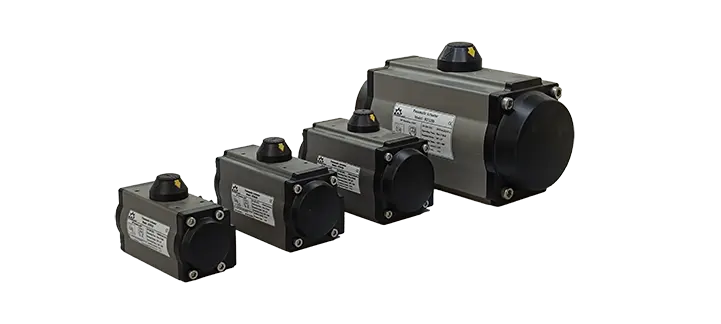

Types of Pneumatic electric valve


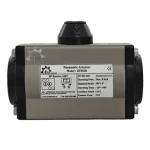
Pneumatic electric valve model RT052

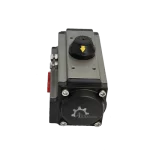
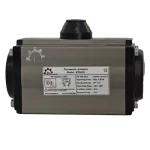
Pneumatic electric valve model RT063


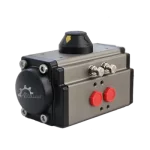
Pneumatic electric valve model RT075


